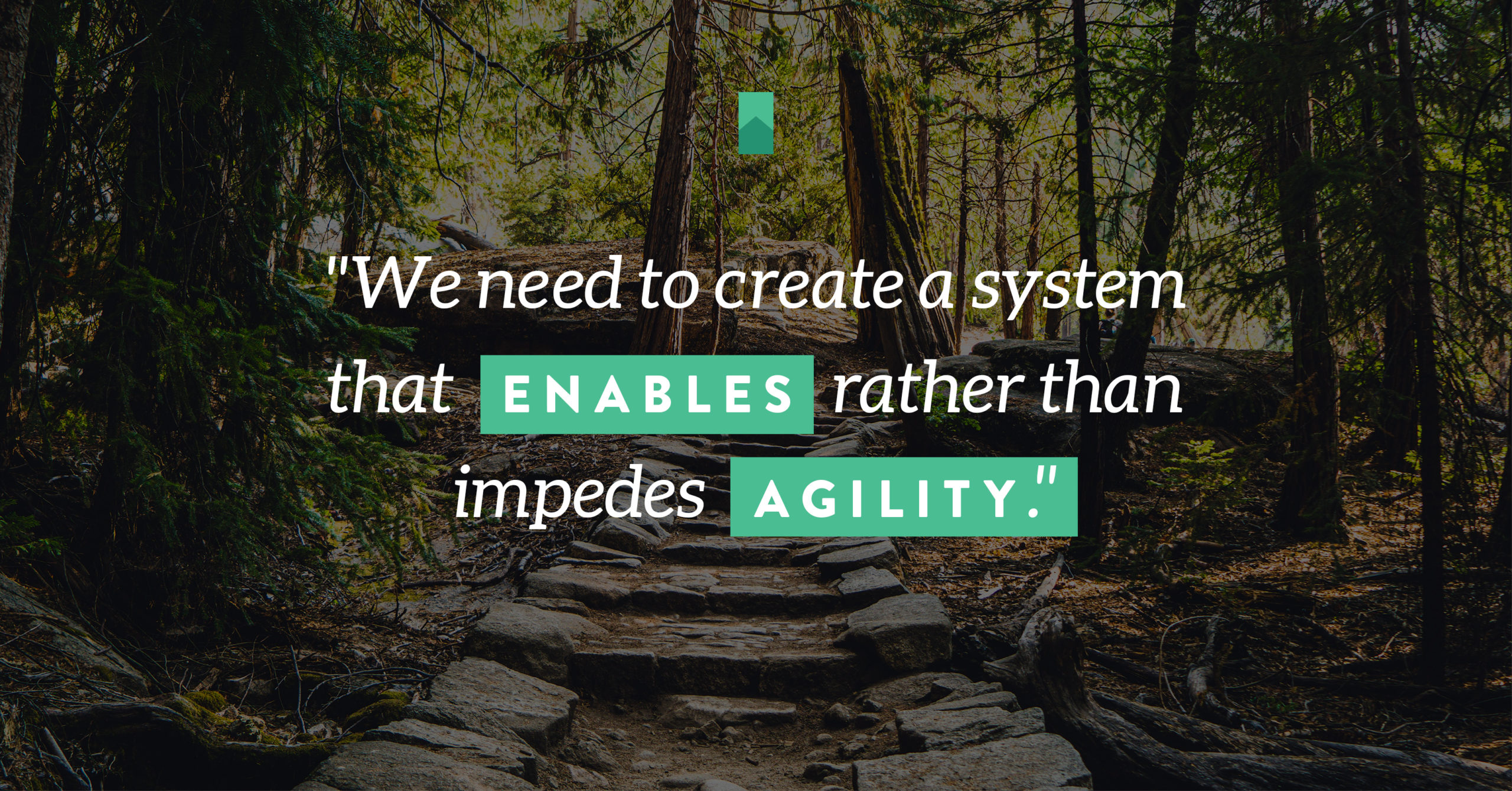How To Make Agile Work at Scale
One of the major challenges of introducing Agile into an organizational ecosystem is that Agile principles, practices, mindsets, organizational structure, governance, and metrics aren’t usually in line with how most corporations do business.
Agile gets installed in the small and is instantly at odds with the current operating model. It’s incongruent with how work is funded and approved, and how it handles compliance and corporate governance.
Therefore we see many companies start “doing Agile” at the team level and struggling to make it work—because the rest of the organization isn’t designed to do it. So, we quickly start to bump into organizational functions and the controls that are at odds with Agile practices.
Exceptions Are Key
Instead of installing Agile at the team level and wondering why we aren’t successful, we need to create a system that enables rather than impedes Agility across the enterprise, and that means we need to grant Agile some exceptions at first.
Because we know we’re not going to change the whole system yet, we start by forming stable teams to get the change started there, breaking work down into smaller increments, and decomposing work by value.
In the presence of dependencies, we can’t break because of an operating model, governance, or control mechanisms that are ill-suited for Agility, we must establish compensating controls to help the organization begin to start breaking things into smaller pieces and operating more autonomously.
Compensating Controls
A compensating control is any orchestration mechanism you implement on top of your chosen methodology to help you get to your desired end state. When we put these controls in place, as exceptions, they open opportunities to change.
Once we’ve put some of these controls in place, those opportunities to change will reveal themselves as waste in the system. Then we can reorder our business capabilities and make it a value stream. And even though there are still some dependencies in the system, they’re then able to be more locally managed.
Compensating controls are a way of preparing the field, getting the impediments out of the way, and proactively getting some of the design decisions made so that teams can establish stable, predictable velocity. If we’re not predictable, we can’t improve anything systematically.
Creating the right conditions today that will help us begin incrementally and iteratively creating the right conditions for tomorrow. But if we try to change these things too early, the organization won’t be able to execute this way. If we change it too late, the tensions will build up and try to pull the organization backward.
Once we’ve got a good part of the organization working in a predictable way in these early stages—where we have teams working from prioritized backlogs, and creating working, tested product—we can now do some things that we couldn’t do before.
So, the order in which we take these steps is imperative to successfully moving toward Agility across the enterprise. Then, as we continue our journey, we can bring the organizational design along with the mass of the organization and start to talk about how to get the business involved.
With a more trustworthy and predictable system in place, we can begin to consider how to start articulating our business goals and outcomes we want, and then start to delegate into this new system so decisions can happen on multiple levels. Then the organization can move at the speed of trust—within its newly formed framework of trust and accountability.


